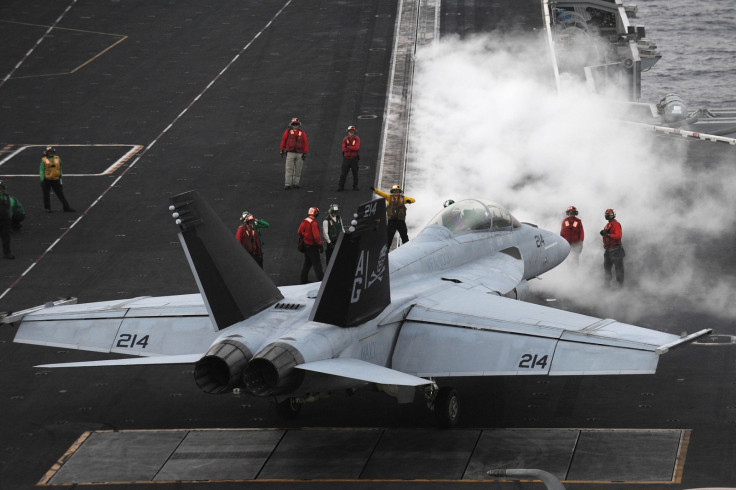US Navy testing electromagnetic catapult to fling fighter jets off aircraft carriers

The US Navy is testing catapults that rely on electromagnetic energy rather than steam to launch fighter jets off aircraft carriers.
The first aircraft carrier to be able to launch naval aircraft using a catapult was the HMS Perseus in 1950 and the technology was soon widely adopted by other countries around the world.
It worked by using a catapult that utilised steam from the ship's boilers or reactors to help get bombers and fighter jets into the air, and amazingly, although technology has made great leaps and bounds in the past 65 years, aircraft carriers are still using steam catapults.
But now that is about to change with the Electromagnetic Aircraft Launch System (EMALS), which is being tested out on the 337m-long USS Gerald R Ford and is able to carry over 75 aircraft at a time.
Steam catapults take up a huge amount of space under the deck of the ship, weigh over 1,300 pounds (590kg) and have to be recharged after each use. The catapults are made up of steam pistons and metal lugs that attach on to a shuttle that attaches on to the plane.
Another problem with steam catapults is they do not accelerate smoothly, which causes a jerky motion and a lot of wear to the body of the plane, but EMALS makes use of an electromagnetic liner motor drive that can accelerate much more smoothly.
EMALS uses an electric current to generate magnetic fields that propel the shuttle down a track built into the runway on the aircraft carrier and, most importantly, the launch speed can be adjusted to match the weight of the fighter jet.
"It will be the first time in 60 years that we have shot something off a ship using something other than a steam catapult," Rear Admiral Thomas Moore, program executive officer of the Carriers division in the US Navy, told Defence Tech.
"By having this electrical pulse come down, you are pulling the aircraft down to the catapult to launch it. You can dial in the precise weight of the aircraft. As you accelerate the aircraft down the catapult, you can accelerate it to the precise speed it needs to launch."
The US Navy will start catapulting "dead loads" into a river in June. So far, 452 launches have been successfully carried out with aircraft, including F/A-18 Super Hornets, EA-18G Growlers and E2D Advanced Hawkeyes.
Another interesting aspect of EMALS is it can be used to launch a much lighter aircraft, such as an unmanned aircraft system, as well as one that needs much more energy to launch.
The USS Ford is able to generate 13,800 volts of electrical power, three times more than the USS Nimitz supercarrier, making it ideal for working with EMALS.
The Chinese are also looking into electromagnetic catapults, with recent satellite photos showing an electromagnetic catapult being tested on China's first aircraft carrier, the Liaoning.
© Copyright IBTimes 2025. All rights reserved.






















